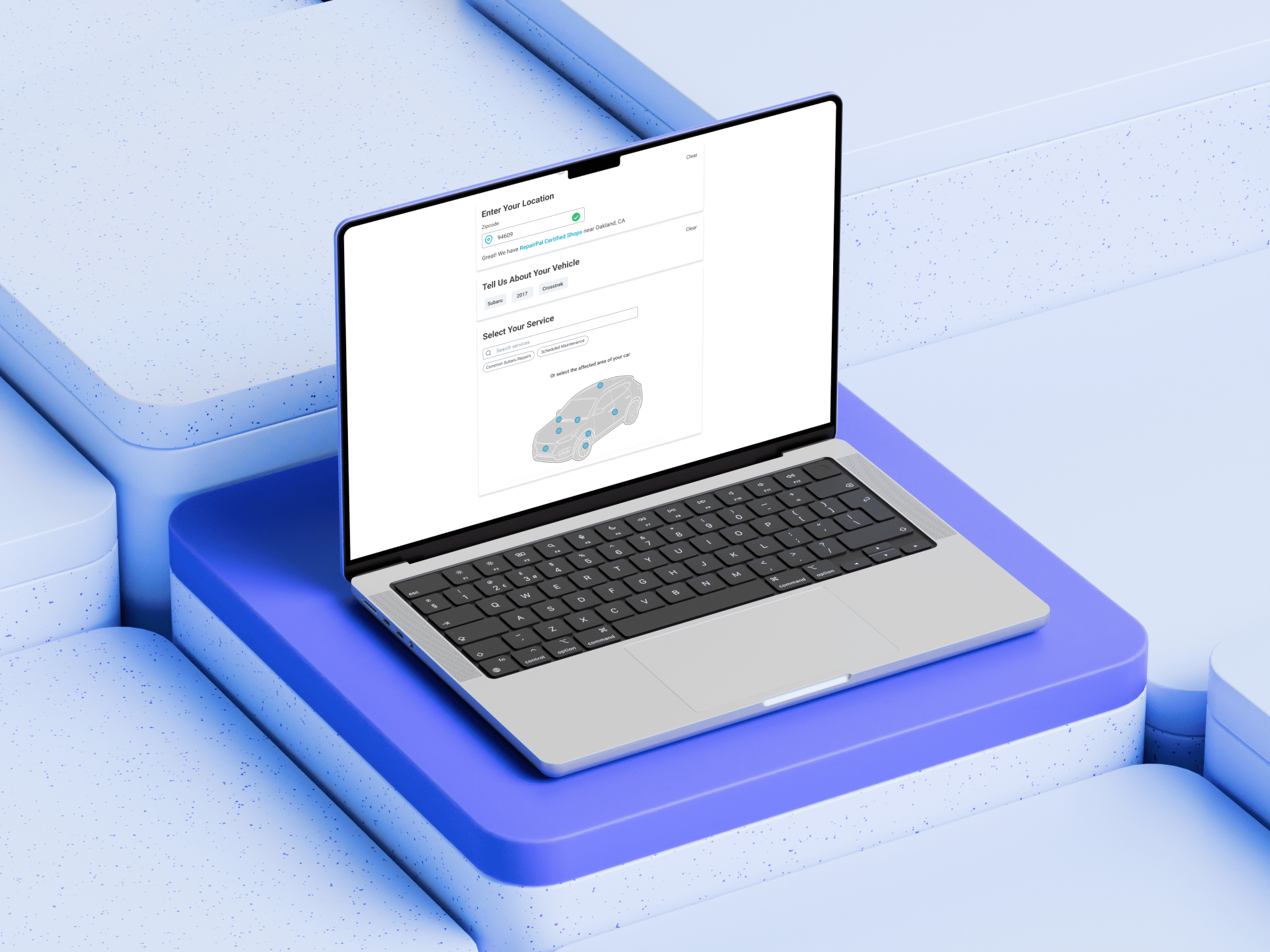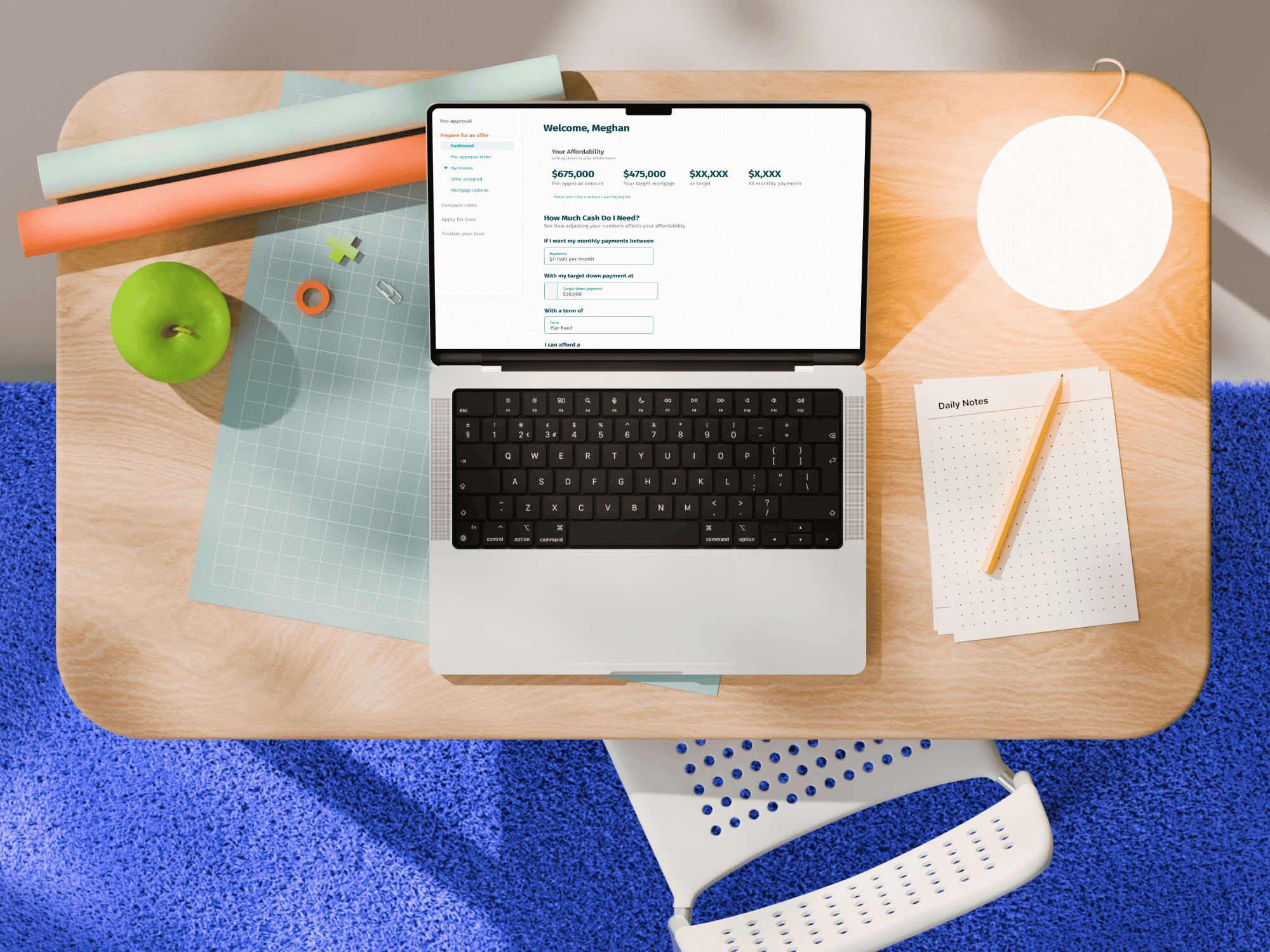How Cost Clarity Within Auto-Repair UX Tripled Shop Appointment Conversions

Summary
I led the redesign of RepairPal’s car repair estimator to rebuild user trust and clarity for people navigating car issues, especially those with limited automotive knowledge.
Focus: Trust, transparency, and conversion
Role & Scope
Title: Lead Product Designer, Consumer Experience
I led the end-to-end redesign, from research synthesis through final UI and launch. My responsibilities included:
- Conducting qualitative interviews and usability testing with car owners and shop customers
- Facilitating prototype validation to identify MVP features
- Designing progressive-disclosure flows that reduced cognitive overload
- Introducing dual paths for novice vs. experienced users
- Streamlining IA and navigation to reduce drop-offs and dead ends
- Collaborating with product and engineering stakeholders to ensure implementation fidelity
Design Challenge
Redesign the estimator to instill trust, simplify the flow, and guide users toward clear action, whether that’s understanding their car issue or booking a certified shop appointment.
Context
RepairPal helps users understand and compare car repair costs through its online estimator and certified shop network. The previous experience overwhelmed users with technical jargon, overly specific imagery, and confusing next steps. As a result, users abandoned the estimator early and failed to connect with certified shops.
The redesign focused on making the experience emotionally aware, transparent, and easy to navigate, transforming a stressful, uncertain process into one that empowered users to act with confidence.
Opportunity
Create an estimator that builds trust through clarity and confidence through transparency. The goal was to help all user, especially those with low car knowledg, feel capable and supported while increasing funnel completion and lead quality.
Problem Details
The old estimator was cluttered, technical, and emotionally tone-deaf. Users, especially those with limited car knowledge, felt confused, skeptical of price estimates, and unsure how to proceed.
The Impact
- High drop-off rates before completing an estimate
- Low confidence in pricing and next steps
- Underutilization of RepairPal’s certified shop network

Why It Mattered
Car repairs are high-cost, high-stress decisions. Users who don’t trust the estimate won’t convert. For RepairPal, clarity and empathy directly impacted business outcomes by improving conversions and shop-qualified leads.
Goals
- Empower customers to manage privacy and data retention autonomously
- Ensure region-specific compliance logic (EU, UK, CA)
- Reduce support intervention for sensitive workflows
- Meet enterprise renewal and audit expectations to protect revenue
- Establish scalable UX patterns for privacy, governance, and auditability
The Research Process
User & Shop Interviews
- Conducted qualitative interviews with car owners and shop customers
- Identified emotional triggers around confusion, trust, and perceived fairness in pricing
Key Findings
Trust is built when users feel seen, supported, and guided, not just informed.
- Trust gaps were highest among users with low car knowledge—especially women—who reported inflated quotes and unclear diagnoses
- The existing layout was overwhelming and disorganized, causing early abandonment
- Car imagery distracted rather than guided users, slowing task completion Two user types emerged:
- Expert users preferring a fast, form-driven path
- Guided users needing visual support (tap-to-diagnose flow)
- After receiving a quote, most users didn’t know what to do next or realize that RepairPal could connect them to certified shops

Strategy
A dual-path, emotionally intelligent redesign that balanced transparency with usability.
- Simplify the flow: Introduced progressive disclosure to limit visible choices and reduce overwhelm.
- Support different mindsets: Created parallel entry paths guided for novices, direct for experts.
- Refine the vehicle selector: Replaced overly specific car imagery with neutral silhouettes to remove emotional bias.
- Add Interactive diagnosis: Allowed users to tap problem areas on a car and access plain-language repair guidance.
- Clarify next steps: Highlighted certified shops and follow-up actions directly after estimates.
- Collaborate cross-functionally: Partnered with engineering and product to ensure implementation fidelity and data accuracy.
Solution
Delivered a redesigned estimator that prioritized usability, trust, and inclusivity.
- Progressive disclosure flow: Shows only relevant fields per step
- Neutral vehicle imagery: Simplifies task focus and reduces distraction
- Interactive diagnosis tool: Helps novices self-identify issues visually
- Simplified car selection: Step-based, conversational flow for make/model/year
- Clear action pathways: Direct connection to certified shops and guarantees



Outcomes
- +27% increase in funnel completion
- +31% increase in post-estimate conversions
- +62% increase in shop-qualified leads
- Improved engagement among both first-time and returning users
- Stronger emotional trust and clarity reflected in qualitative feedback
The redesign turned an overwhelming estimator into a transparent, confidence-building experience.It bridged emotional and informational needs—helping users trust their estimates and take meaningful action, while driving measurable business impact across conversion, engagement, and lead quality.




